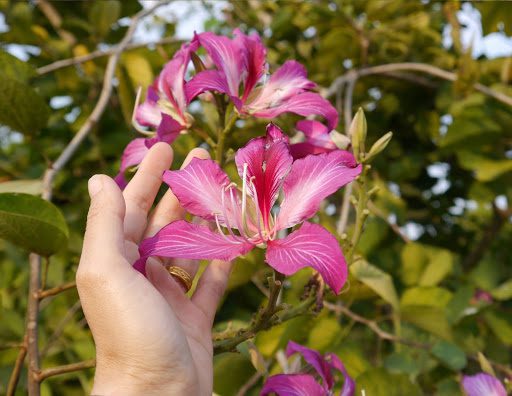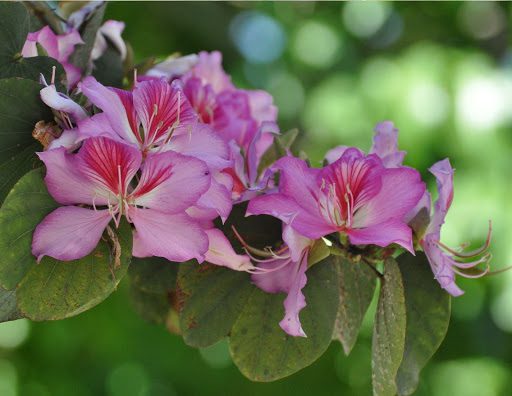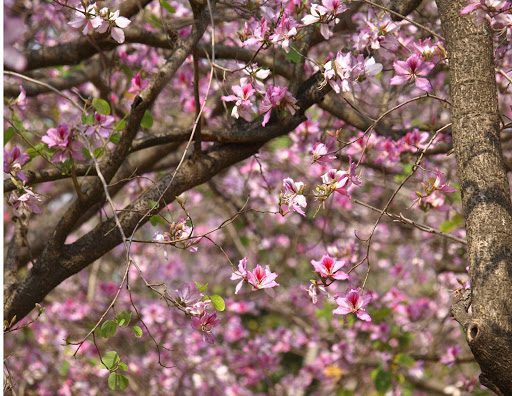Orchid trees are fascinating and decorative additions to any landscape, and, contrary to popular belief, they’re exceptionally low-maintenance trees that are easy to grow and care for.
Orchid trees are known for their ornate blooms that appear in clusters along their branches. Their flowers come in a variety of shapes and colors, some giving off a sweet smell that lends a unique characteristic to any garden.
If you’re hoping to add a dynamic plant to your outdoor garden space, an orchid tree might be exactly what you need. With its unique features, showy blooms, and bright green leaves, it’ll be the perfect centerpiece for your yard and it’ll serve as a wonderful complement to your other outdoor plants.
Below we cover 4 important tips for growing your orchid tree so you can feel confident inviting an one into your favorite garden space.
What Is an Orchid Tree?
An orchid tree—sometimes called an ebony tree—is a tree that bears flowers that closely resemble orchid blooms. They come in hundreds of varieties that usually grow in tropical regions around the world.
Under the right conditions, they can remain lush year-round since some varieties are evergreen, while other varieties drop their leaves during winter months.
Features of an Orchid Tree
Orchid trees have thick leaves that are usually around 4 inches wide. They also have big, bold flowers that come in a variety of bright colors, including pink, purple, yellow, white, and red.
They reproduce by growing flowers that give way to long seedpods that eventually open and release small brown seeds. Interestingly, some species grow blooms with both male and female parts.
Given the right conditions, your orchid tree will grow quickly and may reach 20 to 40 feet in height. It’s also typical for an orchid tree to sprout multiple trunks. For this reason, it’s a good idea to reserve lots of space for your tree to grow.

Tip #1: Plant your tree in a warm, sunny climate.
Orchid trees do best in warm, stable climates. Most varieties grow best in plant hardiness zones 9 to 11, which are located in the deep southern half of the country and on the southern coastal margins. Places such as Hawaii, Southern California, Texas, Louisiana, and Florida offer great climates for orchid trees.
Most varieties are not meant for harsh winter conditions or cold climates. For many types, frost and low temperatures can badly damage the tree.
Professional Tip: In addition to choosing a warm climate for your orchid tree, you should plant it in a spot that offers full sun or bright shade. Your tree may not grow well in low-light or full-shade conditions.
Tip #2: Fertilize your orchid tree.
Just like your other plants, orchid trees need a healthy diet to thrive. For best results, use a general landscape fertilizer as needed.
Typically, they are not susceptible to pests, although sometimes caterpillars may frequent your tree and feed on its leaves.
Professional Tip: If caterpillars or other insects become a problem, you might try using a product containing Bacillus thuringiensis, an eco-friendly pest control method.
Tip #3: Use well-draining soil and water your tree sparingly.
Orchid trees prefer well-draining loam or soil. For best results, use soil with a pH of 5.5 to 6.5. Beware of alkaline soil since it can cause yellowing foliage, though this is usually corrected with a healthy and consistent fertilizing routine.
They are usually drought-tolerant and do best when watered by seasonal rains. In extreme drought conditions, however, you may need to give your tree a good drink with the hose.
Professional Tip: Take care to plant your orchid tree away from automated sprinkler systems since it won’t tolerate over-watering.

Tip #4: Prune your orchid tree to shape its trunk and branches.
If you wish to maintain a particular tree shape, you can prune your orchid tree to encourage it to grow the way you want.
Generally, they sprout multiple trunks. If you prefer a single-trunk look, you can use a pair of loppers to remove additional trunks when they sprout at the tree’s base. You can also cut low branches to create a higher canopy.
Trim off any unsightly or leggy growth after blooms fade. This is also a good time to remove any dead or diseased branches.
Professional Tip: Be sure to use a sterilized pair of sharp shears or loppers when you prune your orchid tree’s branches. This will help you avoid introducing germs or bacteria to your tree.
A Recap: How to Care for Your Orchid Tree
You’ve learned 4 important tips to growing your orchid tree. Here’s a recap so you can get started today:
- Plant your tree in a warm, sunny climate.
- Fertilize your tree with a general landscape fertilizer.
- Use well-draining soil and water your orchid tree sparingly.
- Prune your orchid tree to shape its trunk and branches.
For continued success, explore our other articles, visit our online shop, and connect with other orchid plant lovers in our Facebook group. There, you’ll find everything you need to know to grow your orchid garden big and strong so you can enjoy your plants for years to come.



